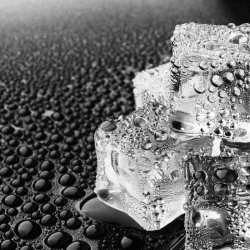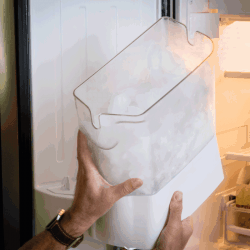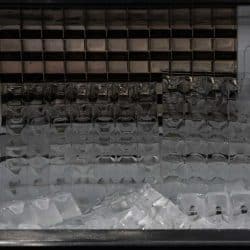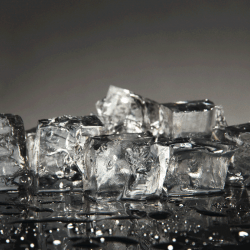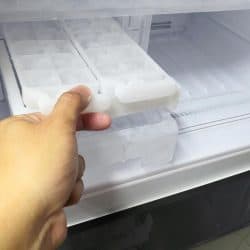Have you run out of ice in your ice bucket? Is the wire arm on your ice maker in the up position? Perhaps you can't remember what your owner's manual said about which direction is off for your ice maker. We've investigated how ice makers work to get the answer on how to position the lever for you.
If the wire arm of your ice maker is in the up position, this signifies to the ice maker that the ice storage bucket is full and turns the ice maker off. If you would like your ice maker to continue making ice, the arm lever should be in the down position.
Should you be turning your ice maker off occasionally? How do you tell if the ice maker is functioning correctly? Is part of your refrigerator colder than other parts? Do you have things freezing in your fridge? If you'd like to learn more about what the ice maker lever does and answers to these questions, continue reading!

How The Ice Maker Works
Your ice maker requires three things to work properly. They are as follows:
- Voltage
- Water supply
- Temperature
The voltage is required to fill the tray and eject your ice cubes into the ice storage bucket. Your water supply line will need to provide the water at a PSI between 20 and 120. The optimal operating temperature will need to be 0° to -5°F or -17° to -15°C.
The voltage sends a signal to the water inlet valve to communicate the tray needs to be filled once the optimum temperature is met. Once the ice maker detects that the cubes have frozen to the desired state, they are ejected into the provided storage bin.
This cycle continues until the storage bin reaches its full capacity. At this point, the excess ice cubes will push the lever arm into the up position, signaling the ice maker to stop producing ice. If you want your ice maker to produce more ice, you will want to empty the storage bin and make sure the lever arm is in the downward position.
Troubleshooting
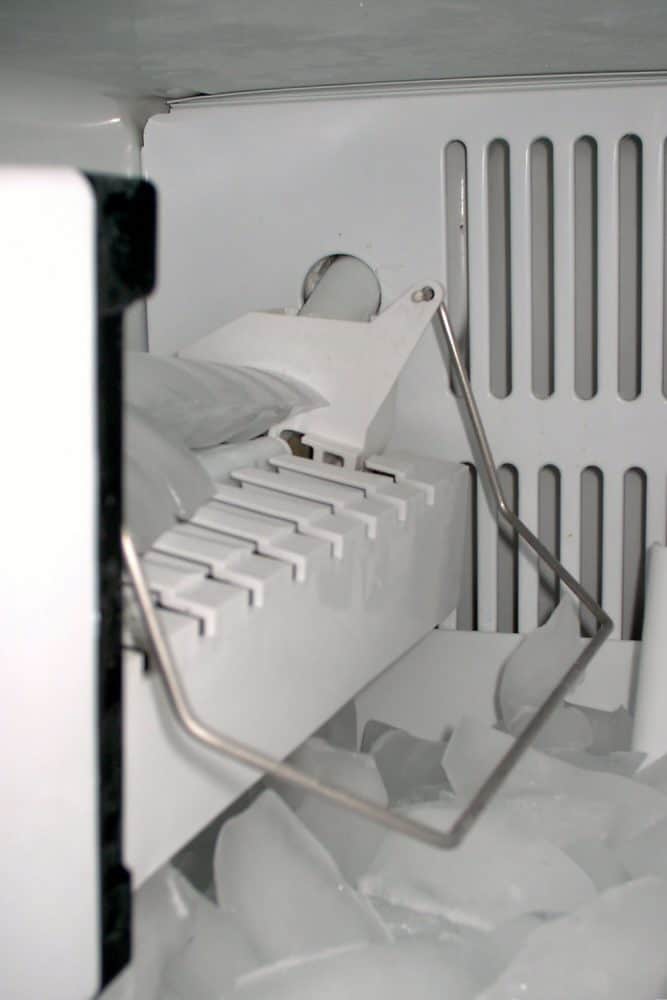
- Improperly sized ice cubes or hollow
- Empty tray
- Frozen ejector
Improperly formed ice
If you're experiencing improperly sized ice cubes, misshapen ice, or hollow cubes, the likely culprit is insufficient water pressure. To check your water pressure, you will want to do the following.
- Turn your water off to your water supply line.
- Disconnect your line.
- Place the line into a bin or bucket. Turn the water supply back on.
- Observe if the water pressure is sufficient or if there is no water pressure.
If your water pressure is fine and this is not the issue, there may be a clog in the inlet valve and that will need replacing. If you did not have sufficient water pressure, then your water line needs to be serviced.
Empty Tray/Frozen Ejector
If your problem is an empty tray, you'll want to inspect whether the tray is dry or full. If the tray is dry/empty, you will want to check your fill tray tube. A common problem with these tubes is for the water to freeze, and then you have an ice blockage in the tube. You can take a hairdryer and warm the tube up, releasing the ice.
If your fill tray is stuck with ice, this could be the ejector paddle. Try flipping that arm lever into the up position, then take warm water in a pitcher and pour it over the stuck ice to melt it. Clean all the water out of the tray, making sure there is no liquid in the surrounding areas, and see if that remedies your problem.
Here is a helpful YouTube video on the whole assembly and troubleshooting issues:
What does the arm do on an ice maker?
The arm functions as an automatic shut-off so that your freezer isn't filled with ice cubes. When your ice is ejected from the tray, it pushes the arm up. If the arm falls back down, it signals to the system that the storage bin is not full and it can continue making ice. If the arm isn't able to go down to its lowest position, it signals the system to stop making ice.
Which way is off on an ice maker?
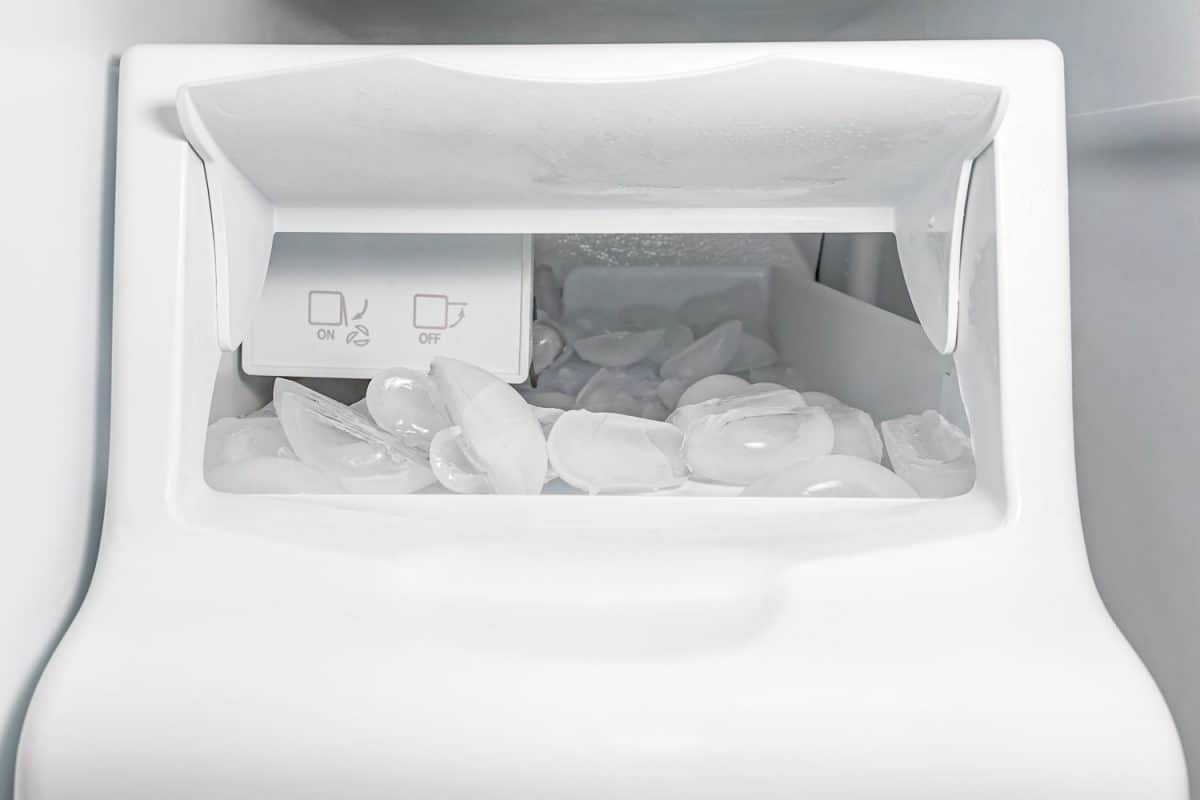
The off position is when the arm lever is pushed upward. Though some models of ice makers do have an actual "on/off" switch, you can also turn it off in addition to the lever arm.
How do I know if my ice maker is working?
If you are having issues with the size, shape, or mass of your ice cubes, you will want to follow the steps listed above to see if that will remedy the situation. If your ice maker tray is empty, you will want to check the fill tube and follow the steps above if it is indeed clogged with ice.
If your storage bin is filled with ice and your lever arm is in the upward position, you will want to empty some or all of the ice out of the storage bin and flip the arm back in the downward position to start the ice-making cycle again.
When should I turn off my ice maker?
If you are gone for an extended period of time, say a long vacation, or perhaps the freezer is in a storage area and you will not be regularly emptying the ice bucket, you will want your ice maker turned off.
To turn off the ice maker, follow the steps below.
- Wait until you hear the ice maker eject the ice from the tray.
- After the ice is ejected from the tray, turn off the water supply line to the freezer. This ensures your ice tray is clear of water or ice.
- Lift the lever arm into the upward position.
It may also be a good idea to turn off your ice maker if you notice a portion of your refrigerator getting colder than the rest or even items in the refrigerator freezing. Typically this is due to the storage bin being full for long periods of time. When the ice is sitting and not being regularly removed, it can affect the refrigerator temperature.
If you are going to defrost your freezer or refrigerator, this would also be a time you will want to make sure your ice maker is turned off.
How do I force an ice maker to cycle?
You will want to check with your specific ice maker models instruction manual, however, most ice makers do work in the same fashion. Here are some steps below to try.
- Remove the ice storage bin from the freezer. Dump the bin, ensuring it is empty, or store the ice in a separate container.
- Replace your storage bin, making sure if your ice maker has a mechanism that locks the bin into place, you have it locked in. Often, there is a sensor or switch signaling to the system the bucket is in place and if the bin is not hitting the sensor or switch, it will turn the cycle off.
- Make sure your arm lever is down or your "on/off" switch is turned on if your model is equipped with one.
- Remove the front cover of your ice maker. You may need a tool such as a flat head screwdriver for this step.
- Rotate the gear on the front of the ice maker until you hear a clicking sound. Once this is accomplished, you can replace your front cover.
- Make sure your arm lever is in the correct downward position. If your unit is functioning properly, this should force it into an ice-making cycle.
In Summary
There are many different components all working together to make your ice maker produce ice. We hope we have clarified any questions you may have about your ice maker and the lever arm function. Furthermore, we hope if you were experiencing any issues with your ice maker we were able to help you troubleshoot and resolve any of the issues you encountered.
If you've enjoyed this article, consider these for further reading:
My Refrigerator Freezer Is Cold But The Fridge Is Warm – What To Do?
Best Refrigerator Brands On The Market

